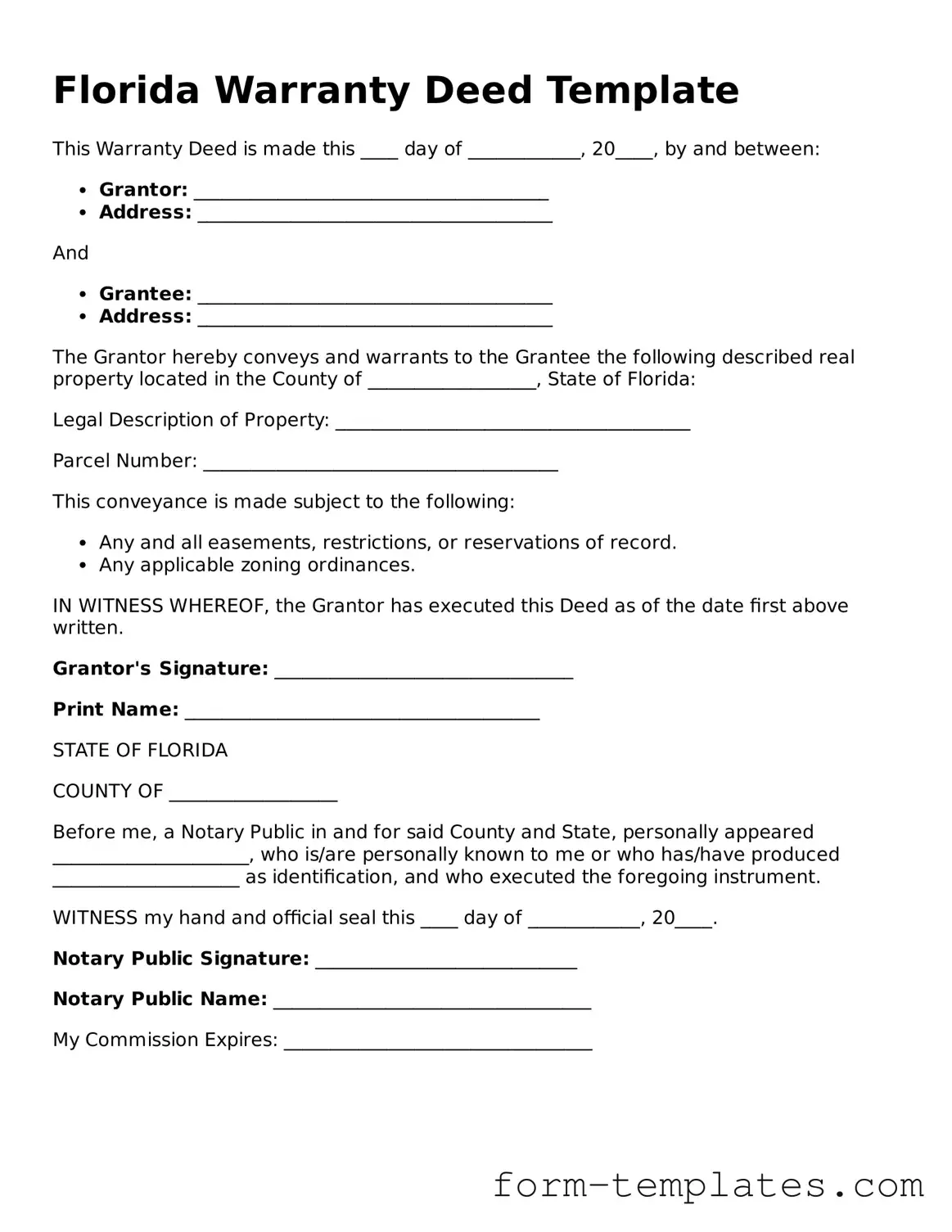Florida Warranty Deed Template
This Warranty Deed is made this ____ day of ____________, 20____, by and between:
- Grantor: ______________________________________
- Address: ______________________________________
And
- Grantee: ______________________________________
- Address: ______________________________________
The Grantor hereby conveys and warrants to the Grantee the following described real property located in the County of __________________, State of Florida:
Legal Description of Property: ______________________________________
Parcel Number: ______________________________________
This conveyance is made subject to the following:
- Any and all easements, restrictions, or reservations of record.
- Any applicable zoning ordinances.
IN WITNESS WHEREOF, the Grantor has executed this Deed as of the date first above written.
Grantor's Signature: ________________________________
Print Name: ______________________________________
STATE OF FLORIDA
COUNTY OF __________________
Before me, a Notary Public in and for said County and State, personally appeared _____________________, who is/are personally known to me or who has/have produced ____________________ as identification, and who executed the foregoing instrument.
WITNESS my hand and official seal this ____ day of ____________, 20____.
Notary Public Signature: ____________________________
Notary Public Name: __________________________________
My Commission Expires: _________________________________
